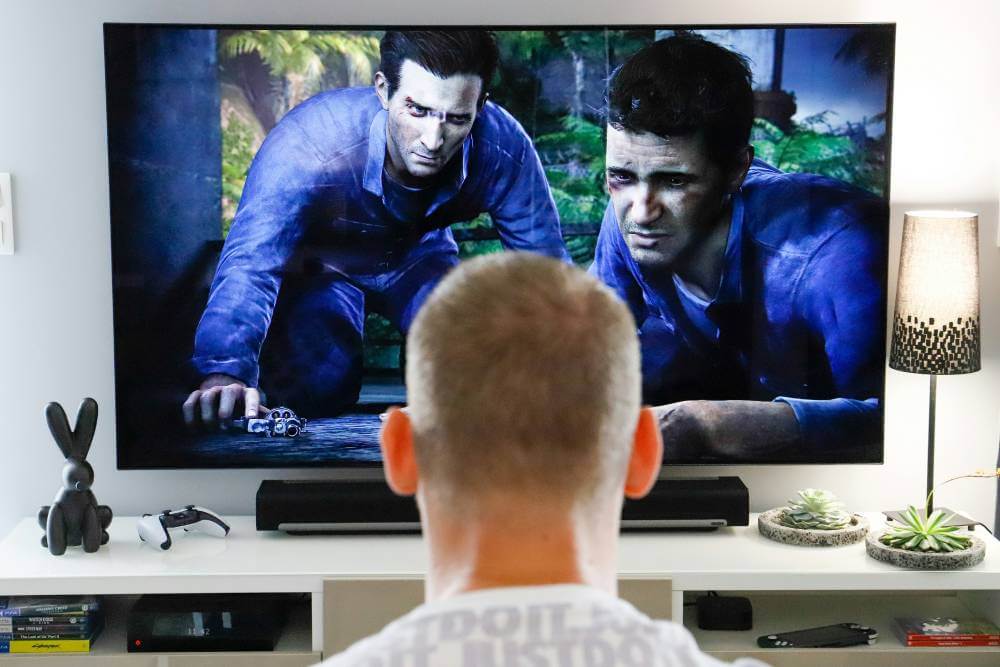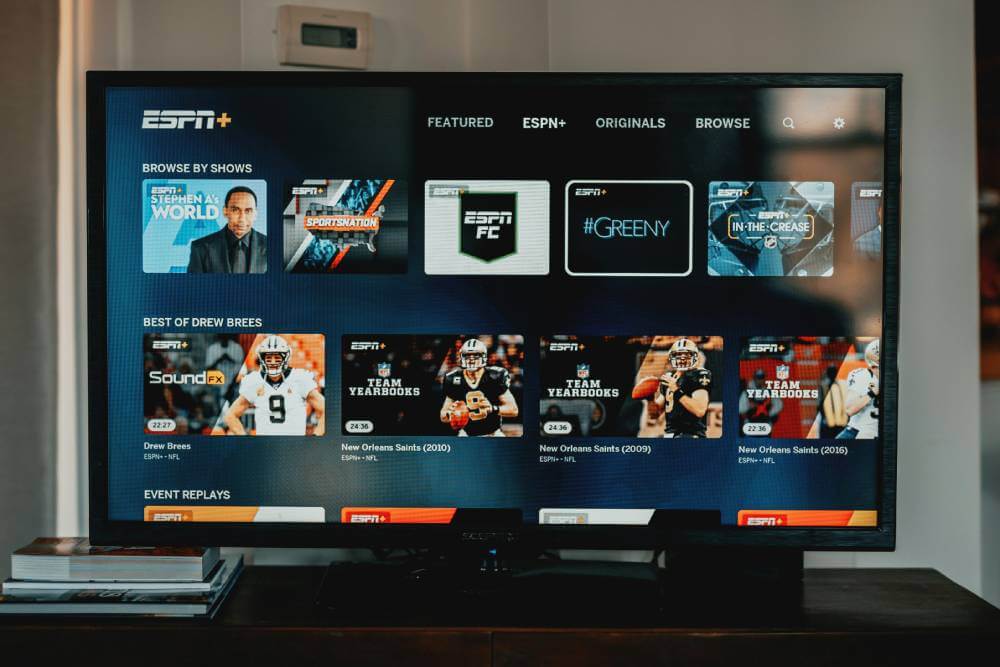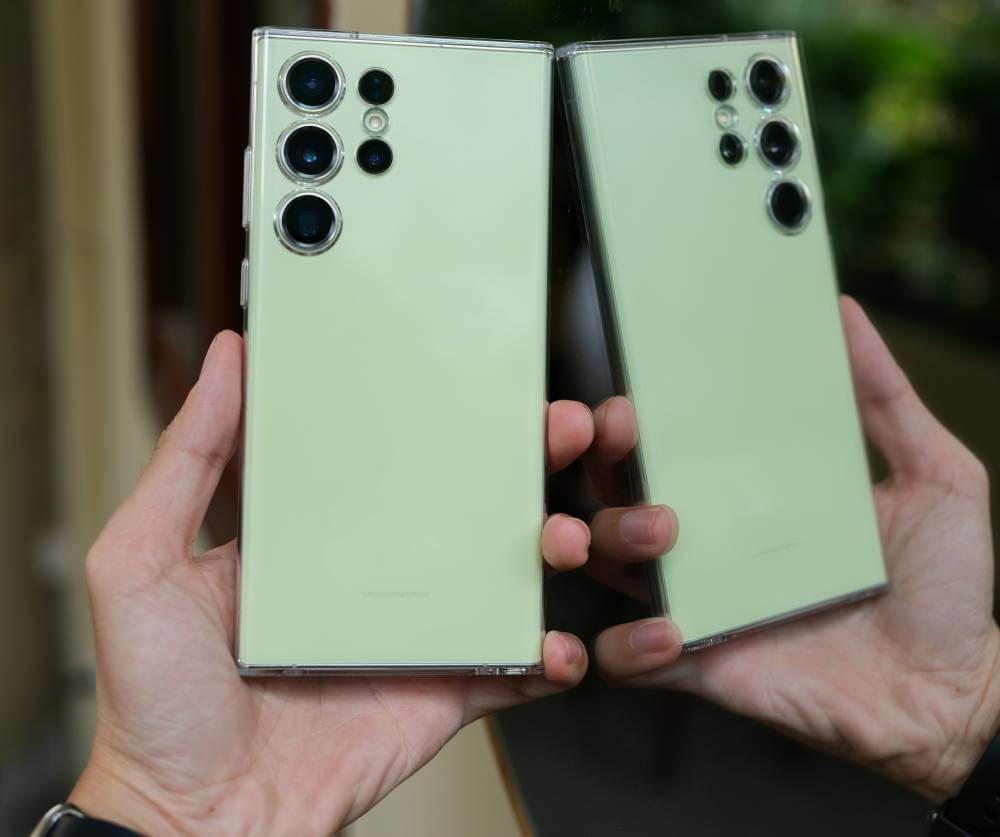In the world of display tech, OLED and LED are the two most used acronyms. They look similar at first but are actually quite different. In this guide, we’ll break down the differences and help you decide which one is best for you.
When buying a TV or monitor, there are many things to consider. From resolution to refresh rate, the tech specs can be overwhelming, making it challenging to find the right display or device. Before we get into the specifics, let’s understand the basic tech behind these displays.
OLED and LED displays are often sold together but use very different ways of producing images and backlighting. This difference affects the picture quality, display size, and weight. Read on to find out which one is for you and whether OLED or LED is better.
The Main Difference Between OLED and LED
When it comes to display tech, understanding the basic difference between OLED (Organic light-emitting diodes) and LED (Light-emitting diodes) is critical to making a decision. The most significant difference is how these techs produce images and light.
How LED Displays Work?
LED displays produce images using a transparent LCD (Liquid Crystal Display) panel. Here’s how it works:
Backlighting Required: Since LCDs don’t emit their own light, they need backlighting to produce an image. This backlighting is provided by LEDs placed behind the panel or around its edges.
Older Backlighting Methods: In older LED displays, backlighting could be as few as ten or fewer “lighting zones.” This limited approach often resulted in uneven lighting, where dark parts of the image would appear over-lit or gray because of the imprecise placement of the light sources.
Modern Advancements: Today’s LED displays have come a long way, with many having thousands of lighting zones. This allows for more precise control of brightness and contrast so each small part of the display can get the right amount of light. As a result, modern LED displays can produce better image quality with higher brightness and deeper black levels.
Image Quality Comparison
When comparing the image quality of OLED and LED displays, here are the factors to consider:
Contrast and Brightness: OLED wins here because of its true blacks. LED struggles with black levels, especially in high-contrast scenes.
Color Accuracy: OLED tech has better color accuracy and vibrancy, so it’s the preferred choice for professionals in photography and video production.
Motion Handling: OLED displays have smoother motion handling, which is good for fast-paced content like sports or action movies.
Why Get an OLED Display?
1. You Want the Thinnest, Most Sleek Display
If you’re someone who values style as much as function, OLED tech is a game changer. One of the biggest benefits of OLED displays is they can produce their own light, so you don’t need the bulk of backlighting hardware.
Sleek and Modern Look: For TVs, this means you can have ultra-slim models that look like they belong in a sci-fi movie. Personally, I think an OLED TV can transform a living room, making it look more modern and classy. The slim profile of these displays can match any decor and become a design centerpiece.
Lightweight Mobile Devices: For smartphones and tablets, OLED tech means lighter and slimmer devices. As someone who carries my phone in my pocket, I appreciate how a lighter device can make a big difference in comfort and convenience throughout the day.
2. Energy Efficiency Is Important to You
In today’s world, where energy consumption is a growing concern, OLED displays excel in power efficiency. While OLED TVs and monitors can help reduce your electricity bills compared to traditional LED displays, the real magic happens in mobile devices.
Smart Power Usage: OLED screens can turn off black pixels completely, so they consume almost zero power when displaying dark content. This is great for people who watch movies or play games with dark scenes. I’ve noticed my OLED phone lasts longer on a single charge, especially when I’m in dark mode or watching videos.
Longer Battery Life: Power savings means longer battery life for mobile devices. As someone who uses my phone all day, I appreciate the convenience of knowing my device can last longer without needing to recharge.
3. You Want True Blacks
If you’re a movie buff or a gamer, you know how important blacks are for an immersive experience. OLED displays win here with perfect blacks that make the overall image better.
True Black Experience: Unlike most LED-lit displays, which can suffer from light bleed and appear gray in dark scenes, OLED tech allows for complete pixel shutdown. This means you get true blacks that add depth and contrast to your viewing experience. I find watching movies on an OLED screen more engaging as the visuals are more detailed and lifelike.
Better Visuals: Eliminating light bleed improves not only black levels but also color accuracy and vibrancy. Whether I’m watching an action movie or a visually stunning video game, the difference in picture quality is noticeable and more fun.
Buy an LED If…
1. You’re on a Tight Budget
LED is the way to go if you’re looking for a display that offers good value without a big price tag.
Affordability: OLED displays and smartphones are beautiful, but that beauty comes at a cost. For example, a decent 65-inch 4K OLED TV can cost over $1,500. At the time of writing, you can get a 65-inch LED backlit TV for around $550.
Budget-Friendly Options: While LED displays may not match the blacks and colors of OLEDs, the savings are huge. You can buy almost three LED TVs for the price of one OLED. For many consumers, especially those on a budget, this makes LED displays a practical choice without sacrificing too much quality.
2. You Need the Highest Refresh Rate
For gamers, a display that can keep up with fast action is key.
Gaming: Competitive gaming is about achieving the highest refresh rate, which determines how many frames a display can show per second. The higher the refresh rate, the smoother the gameplay and faster the reaction to on-screen action.
LED Advantages: In this regard, LED-lit display technologies like VA (Vertical Alignment) or TN (Twisted Nematic) have the upper hand. Monitors from Alienware have been available with 360Hz refresh rate for a while now, and they’re incredibly smooth. The first 240Hz OLED display from LG was just introduced recently, so LED is the way to go for serious gamers.
3. You Need Maximum Brightness
When it comes to brightness, LED displays outshine their OLED counterparts.
Brightness Levels: OLED displays peak at around 1,000 nits, which is good but not as high as LED displays. LED displays can reach 5,000 to 8,000 nits, making them suitable for various lighting conditions.
Practical Uses: This is important for outdoor TVs, smartphones, and smartwatches that you’ll use in bright environments. If you watch TV in a sunlit room or need an outdoor display, you’ll want an LED display. I find having a bright screen makes a big difference when watching during the day, so I don’t have to squint or adjust my position to see the screen clearly.
Is the Difference Between LED and OLED Noticeable?

The difference between LED and OLED is noticeable, but it depends on the quality and technology of the LED display being compared.
1. Quality of the LED Display Matters
As mentioned earlier, there are various types of display panels that use LED backlighting, and their performance can vary greatly.
Basic LED Models: If you compare an OLED monitor or TV with a basic LED-lit model that uses a cheap VA (Vertical Alignment) panel, the difference will be huge—almost night and day. The biggest advantage of OLED technology is its ability to produce true blacks. While the LED panel will look gray in dark scenes, the OLED panel will show pitch black, and that’s where the contrast and depth of the image come in.
Personal Experience: I’ve experienced this myself when watching movies in dark rooms. The blacks of an OLED display are more immersive, and shadows and details pop more than a basic LED display can’t.
2. Higher-End LED Technologies
However, the comparison changes when you consider higher-end LED technologies like QLED (Quantum Dot LED) or microLED panels.
QLED and microLED Advantages: These advanced LED technologies can offer better color accuracy, brightness, and contrast than standard LED displays. For example, QLED panels use quantum dot technology to enhance color and brightness, which can make them competitive with OLED displays in some cases.
Different Viewing Experiences: The difference between an OLED display and a high-end QLED or microLED display is not as big. While OLED still excels in black and contrast, advancements in LED technology can produce vibrant colors and high brightness, making the choice more subjective based on personal preferences and viewing conditions.
3. Viewing Environment and Content
The difference between LED and OLED can also depend on the viewing environment and the displayed content type.
Bright vs. Dark Rooms: In bright rooms, the higher brightness of LED displays is an advantage, as they can be seen even in harsh lighting conditions. In dark rooms, the better blacks of OLED displays shine and provide a more cinematic experience.
Content: The type of content you watch can also affect your perception of the difference. For example, if you watch movies with lots of dark scenes, the benefits of OLED will be more noticeable. However, a high-end LED display will do for general TV viewing or bright content.
What’s the Future of LED and OLED?
The display technology landscape will evolve in the coming months and years. Both LED and OLED will improve, but in different ways.
1. The Advancements in LED Technology
In the near term, LED will continue to close the gap in the advantages of OLED.
Better Performance: LED displays are already making progress in matching OLED’s blacks, slimness, and overall performance. For example, mini LED and micro LED technology are improving contrast ratio and brightness, making LED displays more competitive.
Cost: One advantage of LED technology is cost. LED displays are generally cheaper than OLED, and as they improve, they can offer similar performance at a lower price. This can lead to a scenario where LED technology meets or even surpasses OLED, especially for budget-conscious consumers.
2. The Growth of OLED
While LED technology improves, OLED will also grow, especially in two areas: affordability and flexibility.
Affordability: The price of OLED displays has been dropping. Popular models in smaller sizes (42-inch to 55-inch TVs) can now be found for under $1,000, which is a big drop from a few years ago when they were in the thousands. This trend will continue as the manufacturing process improves and competition in the market increases. As someone who has been following the evolution of display technology, I’m excited to see how OLED is becoming more accessible to everyday consumers.
Flexibility and Innovation: OLED also enables new display formats. Flexible OLED is already used in smartphones like Samsung’s Galaxy Z Fold 4 and Galaxy Z Flip 4. Concept designs for rollable and even stretchable displays are also in development, all leveraging the properties of OLED. This flexibility will open up new ways for us to interact with screens in the future.
3. The Competition
As both LED and OLED improve, the competition will get fiercer.
Consumer Choice: As both technologies improve, consumers will have more choices than ever. Whether you want price, performance, or unique features, the market will cater to a wider range of preferences and needs.
Future Applications: The applications for both LED and OLED are endless. From home entertainment to professional displays to wearable technology, the future of display tech will be exciting.
Is QLED the same as OLED?
No, QLED and OLED are different display technologies altogether.
What is QLED Technology?
QLED (Quantum Dot Light Emitting Diode) displays developed by Samsung are essentially a type of LED-lit display. Here’s how it works:
LED Backlighting: QLED displays use traditional LED backlighting. This means they have a backlight like standard LED displays.
Quantum Dots: The “Q” in QLED stands for quantum dots, tiny semiconductor particles that emit specific colors when exposed to light. These quantum dots enhance the color accuracy and brightness of the display by filtering the light from the LED backlight. It’s like LCDs, where color is provided for each pixel.
Great Results: QLED technology has improved a lot. Many QLED displays can produce great brightness and colors and are competitive with OLED in some scenarios. As someone who loves great visuals, I’ve seen QLED displays produce amazing images, especially in well-lit environments.
The Key Differences from OLED
While QLED has improved a lot, it’s still fundamentally different from OLED:
Self-Emitting vs. Backlit: The biggest difference is that OLED (Organic Light Emitting Diode) is self-emitting. Each pixel in an OLED display emits its own light, producing perfect black and great contrast. QLED displays are backlit, producing light bleed and less effective black levels.
Black Levels and Contrast: OLED can produce true blacks by turning off individual pixels. This results in a higher contrast ratio than QLED, which can’t achieve the same depth in dark scenes.
Viewing Angles: OLED has better viewing angles than QLED. Since OLED pixels emit light directly, the colors and contrast remain the same even when viewed from the side. QLED displays, on the other hand, can have color distortion and reduced brightness at wider angles.
What is MicroLED?

MicroLED is the next-gen display technology that aims to create LEDs that are so small that they can illuminate individual pixels. It’s trying to combine the best of existing display technologies while overcoming their limitations.
The Concept Behind MicroLED
Individual Pixel Illumination: MicroLED’s main goal is to have pixel-level control over lighting. By using tiny LEDs, each emitting its own light, microLED displays can match OLED’s ability to turn off lighting pixel-by-pixel. This means perfect black levels and great contrast, just like OLED.
Great Performance: Theoretically, microLED displays can have the brightness and color accuracy of LEDs and deep blacks and contrast ratios of OLEDs. This would be a display that performs great in all viewing conditions, making it a consumer’s dream.
Current State of MicroLED Technology
Availability: As of now, there are no commercial microLED displays that fully realize this pixel-perfect technology, but manufacturers are working on it. For example, Samsung’s Odyssey Neo G9 gaming monitor uses “miniLED” backlighting with 2,048 individual lighting zones. This allows for very precise backlight control and better picture quality.
Pixel Count: To match the individual pixel lighting of a 4K OLED panel, a microLED display would need around 8.2 million microLEDs, one for each pixel in a 4K resolution. This level of miniaturization is a considerable engineering challenge, but it also shows the potential of micro LEDs.
Future of MicroLED
Ultra Premium Models: Some manufacturers, like Samsung, are already using “Micro LED” branding for their ultra-premium models. While these displays show the potential of microLED technology, none have yet achieved the level of per-pixel miniaturization to fully realize its benefits.
Market Potential: As technology evolves, microLED could be a game changer. Combining the best of OLED and LED could lead to a new generation of displays that are brighter, contrastier, and more color-accurate.
Personal Opinion
As someone who closely follows display tech, I find microLED very exciting. The idea of a display with the best of both worlds – OLED’s perfect blacks and LED’s brightness – could change how we consume visual content. We may not see fully realized microLED displays yet, but the ongoing R&D in this area is promising.






